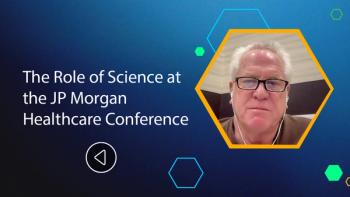
Advancing Health Innovation in 2022: Where Should We Focus?
What can both public and private sector stakeholders learn from current trends to accelerate innovation around the COVID-19 pandemic and other emerging global health threats, including antimicrobial resistance?
The COVID-19 pandemic and other emerging global health threats, including antimicrobial resistance (AMR), require sustained investment, partnership, and creative policy solutions to address patient needs. The ongoing pandemic has underscored the importance of collaborative, multi-stakeholder efforts when confronting truly global challenges. As we look ahead to 2022, what can both public and private sector stakeholders learn from current trends to accelerate innovation around these critical global challenges?
Recent trends in US policymaking
In the US, recent policymaking efforts have focused on supply chain innovation and drug pricing reforms.
The Biden Administration has recently announced a public/private sector strategy focused on augmenting the biopharmaceutical supply chain via onshoring for essential medicines, investment into domestic active pharmaceutical ingredients (API) production, and other related initiatives.
Meanwhile, in Congress, Senators Elizabeth Warren (D-Mass.) and Tina Smith (D-Minn.) have reintroduced the Pharmaceutical Supply Chain Defense and Enhancement Act.Currently, the US imports nearly 80% of the APIs used in generic drugs that millions of American patients rely on. This legislation sets out reforms to reinvigorate the US’ manufacturing capacity and end the nation’s reliance on foreign countries for critical drugs used by millions of Americans, which some view as risks to both national security and public health.
In addition, the Administration, Congress, and state legislatures continue to explore options to alleviate drug pricing pressures, which have historically translated to higher patient out-of-pocket (OOP) costs and, for government-administered programs like Medicare, higher costs to the federal government.
President Biden recently signed an executive order that, in part, calls on federal agencies to advance solutions to increase competition to drive down drug prices. Others have called for reforming the regulatory structure to address the so-called gross-to-net bubble, where pricing negotiations are thought to benefit some stakeholders in the value chain and disadvantage patients by increasing OOP costs.
Recent trends in global policymaking
On the global stage, the COVID-19 pandemic continues to guide near-term policymaking efforts in several fora.
At the World Trade Organization (WTO), a potential TRIPS waiver for intellectual property (IP) protections applying to COVID-19 medical products, including diagnostics, therapeutics, and vaccines, has gained support as a way to potentially address supply chain pressures during the pandemic. Text-based negotiations are currently ongoing at the WTO. Others have called for easing export restrictions and tariffs which, in principle, could accelerate global distribution of existing COVID-19 vaccine doses without the need for a waiver.
At the World Health Organization, during the World Health Assembly (WHA), a special session was held to begin discussions for a possible treaty on pandemic preparedness and response.Chile, a co-sponsor of the resolution, called for a special session in November and urged countries to start negotiations to develop an international instrument to respond to the complexities of future pandemic while reinforcing global health diplomacy.
How can stakeholders accelerate innovation in 2022?
Recent efforts underline three key lessons that can help accelerate innovation in 2022.
First, global cooperation has emerged as the bedrock for driving rapid innovation in all international fora. For example, India, Australia, the US, and Japan —“Quad Leaders”— are taking shared action to expand safe and effective COVID-19 vaccine manufacturing in 2021, and working together to strengthen and assist countries in the Indo-Pacific with vaccination, in close coordination with the existing multilateral mechanisms, such as COVAX.
Stakeholders should continue to seek opportunities for global cooperation on priority issues. As a reactive priority, increased cooperation around known trade challenges, such as tariffs and non-tariff barriers, can accelerate supply chain management for critical manufacturing supplies and biopharmaceutical ingredients. As a proactive priority, global cooperation around AMR continues to be an urgent need. The World Bank Group’s 2017 report on drug-resistant infections estimates that unless action is taken, AMR could take 10 million lives annually by 2050, a higher death toll than from cancer. In July 2020, an innovative public-private partnership, the AMR Action Fund, that aims to bring 2 - 4 new antibiotics to patients by 2030. The fund will invest approximately $1 billion to ensure a robust and diverse pipeline of new medicines to treat drug-resistant infections.
Second, close collaboration between the public and private sectors has emerged as a guiding norm for exchanging ideas to scale innovation. For example, development and launch of several COVID-19 vaccines in 2020 demonstrated how multilateral engagement can accelerate innovation. Particularly with the US’ return to multilateralism, alongside an increasingly critical role for the WHO, stakeholders can expect public-private partnerships to be a dominant trend moving forward.
Stakeholders should in particular explore regional opportunities for public/private sector collaboration. For example, especially for biopharmaceutical companies, opportunities for regional collaboration via the Asia Pacific Economic Cooperation (APEC) can be high impact fora for engagement. As just one example, the APEC Rare Disease Network, which fosters public/private dialogue on policymaking priorities to support rare disease patients and their caregivers, developed an action plan, endorsed by all 21 APEC health ministers, with actionable recommendations to foster multi-stakeholder collaboration.
Looking ahead
Health innovation will continue to be at the top of the global policy agenda. Creative policy solutions and collaborative partnerships are the key to outsmart continued and emerging COVID-19 and AMR threats. The global community at every level — patients, governments, private sector and health advocates — must roll up their sleeves in 2022 and drive actionable solutions.
Nicholas J. Diamond is a director for
Newsletter
Lead with insight with the Pharmaceutical Executive newsletter, featuring strategic analysis, leadership trends, and market intelligence for biopharma decision-makers.




